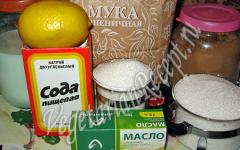A linking verb in English is a verb that connects a subject with an object. Sometimes such verbs are called copular verbs. Linking verbs do not describe any action.
Location:
Subject + linking verb + information about the subject (object).
For example: This food looks appetizing. In this situation, the linking verb “looks” connects the subject with an adjective that describes it.
There are verbs that are always copular because they never describe an action. Other verbs in some sentences can act as linking verbs, and in others as action verbs.
Verbs that are always copular
The following three verbs are always linking verbs:
To be and its other forms (am / is / are / were / was / have, has, had + been / are, is, was + being and others).
To become (become / becomes / became / have, has, had + become / will become / will have become and others).
To seem (seems / seeming / seemed / have, has, had + seamed / are, is, were, was + seeming / will seem).
The cat became thin after returning from the veterinary clinic (The cat lost weight after returning from the veterinary clinic). Here the verb "became" connects the subject "the cat" with information about that subject (the information that the cat has lost weight).
Verbs that can be both action verbs and linking verbs
In the English language, there are verbs that can act as linking verbs in some sentences, and as action verbs in others. In order to determine whether the verb in question functions as a connective or is an action verb, you can change it to the verb “is”. If the sentence still makes sense after this, then the replaced verb was probably a linking verb. If the sentence with the word “is” does not make sense, then most likely it is an action verb.
Examples of such verbs:
Examples in sentences:
Mary appeared uninjured after the incident (Mary seemed uninjured after the incident).
In this example, we can replace the word "appeared" with the word "is" and the sentence will still make sense: "Mary is uninjured after the incident." This gives us grounds to assert that the verb “appeared” in this case is a linking verb.
Before she could leave, Mary appeared (Before she could leave, Mary appeared).
In this sentence, the word “appeared” is in no way connected. It describes an action that Mary performed. Mary appeared, or appeared. If you replace the verb in question with “is”, the sentence will lose its meaning.
At the beginning of the study foreign language Beginners come across many basic terms, the meanings of which are difficult to grasp right away. Already in the first English lessons we come across such concepts as auxiliary, modal, connective and even Irregular Verbs! How to make sense of such diversity? There is only one way out - to consider each grammatical category in detail. This is what we will do in today’s lesson, getting acquainted with the topic: copula verb in English. Let's find out what is hidden behind this term and look at practical examples of its use in everyday speech.
In a well-structured sentence, the semantic connection of its constituent components should be clearly visible. In some languages it does not have to be expressed verbally. For example, in Russian we speak fluently: My brother is an athlete. The sky is bright blue today. The children are tired.English language Such free construction of constructions is categorically unacceptable and obliges the use of a verb in every sentence.
But what kind of verb form can we talk about if the sentence does not indicate any actions? For these cases in English grammar a special category of words is reserved - linking verbs. They have a formal function, i.e. do not express actions, and sometimes are not even translated into Russian at all. Let's look at how the Russian examples given sound in English.
- My brother is an athlete.
- The sky is bright blue today.
- The children are tired.
Learned? Yes, the most popular linking verb found in the English language is the well-known tobe. It is so important that it deserves a separate section.
Connecting components using the verb to be
If you have just started learning English, then the connective to be will be your main assistant for composing sentences. By using this verb you can tell a little about yourself, describe your surroundings and express your attitude. However, this verb is also used in complex grammatical constructions, but there it plays the role of an auxiliary word.
So, as a connecting link, to be in English is used in all tense forms. Let's look at examples of using this link using tables.
It is even easier to form related combinations in the past tense, since only two forms of this verb can be used there.
And in the future tense, one form is used, common to all persons of pronouns and nouns. Let us present separately its affirmative and negative versions.
In addition to denials and affirmations, to be can independently form clarifying questions. To do this, just move it to the beginning of the sentence.
- Is shebeautiful? - She's beautiful?
- Were theystrong? – Were they strong?
- Will he be a doctor? - Hewilldoctor?
Due to its simplicity and versatility, the verb to be is widely popular and is used in most statements. But there are also more individual linking verbs. Let's look at them in more detail.
Complex linking verbs
Don't be put off by the name, because in reality these are, of course, ordinary verbs, but their application and definition require a higher level of understanding of the language.
Over a dozen verbs perform the functions of connectives in English. They all have one of the general meanings:
- to be, to seem;
- become, change;
- perceive, feel;
Some of these words are used exclusively as a linking verb, combining the components of a sentence in English. And the second part acts as both a connecting link and an independent verb. Let's look at both groups.
Constant value
Along with to be, verbs are constant connectives of the English language seem And become. The meaning of the first is to appear, and the second is to become. But remember that during translation the meaning of the connecting link is rarely expressed.
- Shebecame thin afterreturningfromSpain – She lost weight after returning from Spain.
- Thismanseems todobusinessinRussia – This man appears to be doing business in Russia.
It is worth mentioning that we rarely see the use of become as an independent verb with the meaning “be appropriate, fit, look good.”
Variable value
Most verbs belong to this group. Depending on the context of the sentence, they either express their own meaning or contribute to the connection of disparate components.
It is customary to distinguish several groups:
- Sensory Processes and Perception : lookfeelsmelltastesoundsay.
- State , constancy : remain, keep, stay, sit, continue, get.
- Changes , transformation : grow, prove, turn, act, appear.
Note that the first group occurs in speech more often than others. Let's give practical examples.
- Thiscaketastes bitter - The pie tastes bitter.
- The situation remains dangerous – Situationremainsdangerous.
- Myfatherappeared upset aboutsomething – My father seemed upset about something.
How to distinguish a copula from a semantic verb?
For beginners, it's useful to know a couple of easy ways to determine the role of a verb in a sentence.
If you are in doubt about the reason for using a given verb, try replacing it with the corresponding subject form to be. If the connective is replaced, you will not notice any changes in the meaning of the sentence. If, as a result of the replacement, the semantic context is lost, then in this case the verb used was used as an independent word.
- Borislooks tired – Boris looks tired =Borisis tired = Boris is tired. (Value saved)
- Boris looked at her windows and went home – BorislookedonherwindowAndwenthome.
- Boris is at her windows and went home – BorisherwindowAndwenthome. (The meaning of the sentence is lost)
Another way to understand the function of a verb is to find out its purpose. Connectives describe the state of the subject, or express the qualities and characteristics of the character. Independent verbs are designed to express actions or events, therefore, their role is to show that the main person performs the specified actions. This law can also be traced in the example of the sentences given above: it is clear that the first statement denotes a state, and the second - an action.
Views: 258
In this article we will look at the main linking verbs in English (or linking verbs). Most common linking verbs in English the following:
keep – continue to do (sth.), keep, store
prove – to prove
remain – stay to stay
stay - stay
become - become
come - to come
end up – end with something
turn out – turn out
grow - grow
appear – appear, appear
look – look, look
seem - seem
sound - sound
Most of these linking verbs in English can be followed by adjectives or phrasal nouns. The word keep can only be followed by a noun or adjective.
After the verbs come, get, grow, an infinitive can be used. Linking verbs in English come and grow are used to show gradual changes:
When you get to know her, you"ll like her - you will like her when you get to know her better
The predicativeness and modality of an English sentence are expressed by the predicate, while the specific function of the predicate can only be performed by a verb in some personal form. That is why the presence of a personal form of verbs in two-part English sentence is mandatory. A verb in its personal form can perform its main function independently, or can be combined with different parts of speech, forming compound verbal (consisting only of verbs) or nominal (consisting of verbs in combination with other parts of speech) predicates. Compound nominal predicates, along with the predicate (nominal part), always include a linking verb.
Linking verbs are semi-meaningful verbs, the purpose of which is to connect the predicate (the nominal part of the predicate) in a sentence with the subject. Various nouns, pronouns, numerals, adjectives, participles II, infinitives and gerunds can be used as a nominal part, but adjectives and nouns are most often found in speech. Linking verbs in English are characterized by the fact that they do not express any action, but allow the predicates present in the sentence to describe (when they are expressed by adjectives) or rename (when they are expressed by nouns) the subject. For example:
- His story was fascinating. – His story was fascinating (subject description).
- Their father is irrigation engineer – Their father is a meliorator (renaming, introducing a new designation for the subject).
The most common linking verbs in English are to be, to look, to become, to remain, to feel, to seem, to sound, to turn, to smell. The bulk of the most common English linking verbs can be divided into two groups and presented in the form of a small summary table.
Linking verbs in English
|
Verbs of sensation |
State verbs |
||
| feel | to feel | act | to act |
| to look like | to look | turn out to be | to appear |
| seem | to seem | be | to be |
| smell | to smell | become | to become |
| sound | to sound | become | to come |
| to taste | to taste | continue | to continue |
| confirm, speak | to say | become in the end | to end up |
| become weaker, dry up | to fade | ||
| become (lower, smaller, etc.) | to fall | ||
| become | to get | ||
| become | to go | ||
| become (about light, color) | to glow | ||
| get bigger, grow up | to grow | ||
| lie | to lie | ||
| pretend | to play | ||
| turn out to be | to prove | ||
| stay | to remain | ||
| become | to run | ||
| sit | to sit | ||
| stand | to stand | ||
| stay | to stay | ||
| turn out to be | to test | ||
| turn around | to turn | ||
When studying linking verbs, it is important to pay attention to the following points:
- Distinction between the concepts of linking verb and full-valued verb
All connectives, with the exception of to become, to be, to seem, can also be used as semantic (full-valued) verbs. In those constructions in which they act as connectives, the circumstances following them can answer the same question as the direct object (what?), but the transfer of action does not occur. For example:
- Her cat ran wild in the country. - Outside the city, her cat went wild (became wild). (Here the verb to run is used as a connective).
- He ran the cable under the carpet. - He laid (stretched) the cable under the carpet. (Here we are dealing with the full verb to run).
- It sounds your mother. – It seems that this is your mother (sounds like your mother). (Here the verb to sound acts as a connective).
- Your telephone sounds scratchy. – Your phone is ringing unpleasantly (creaky sound). (Here the verb to sound is full-meaning, semantic).
In order to correctly determine the type of verb in the existing context, you can replace it with the corresponding form of the verb to be. If the logical connections in the sentence are not violated, then this proposal the replaced verb acted as a connective. If the logical connections were broken and the sentence lost its meaning, then the verb was full-meaning. However, this method cannot be used with all verbs; for example, the verb to appear cannot be checked in this way.
- Distinction between the concepts of linking verb and service (auxiliary) verb
Service verbs are involved in the formation of English complex tenses and serve to convey action. Linking verbs cannot convey any action as such. For example:
- Jerry was very tired tonight. Jerry was very tired this evening. (Here we are dealing with the linking verb to be).
- She is bleaching her bed sheets. – She bleaches her sheets. (Here it is auxiliary and serves to form the Present Continuous form).
From the first lessons in English they explain to us that in English the verb to be most often acts as a linking verb. Except to be In English, you will encounter other linking verbs whose role in a sentence is similar to that of to be. In this post I propose to get acquainted with a dozen such verbs.
Linking verbs or verbs of being indicate the existence of an object, its belonging to a class or category, the presence of certain qualities. By the way, the Russian language also has linking verbs, but they are omitted (zero linkage).
For example:
Vasya is a schoolboy. But, Vasya was a schoolboy. Vasya will a schoolboy.
In English, to be is the most common linking verb. I will not argue.
For example:
John is a doctor. - John is a doctor.
My sister is sick. - My sister is sick.
In this post we will not consider cases of using to be as a linking verb. We'll talk about other verbs that are used to create strong connectives in an English sentence. These are the heroes:
become, come, grow, turn
appear, seem
keep, remain, stay
look, sound
feel, taste, smell
One of the main features of these verbs is that they are followed by adjectives rather than adverbs. Compare:
I am feeling bad.- I feel bad.
He sounded distracted. - His voice sounded embarrassed.
But I will not dive into lengthy theoretical discussions. It’s better to move straight to practice.
BECOME, GET, GO, TURN
Verb become used to describe the process of changing the form or essence of an object or phenomenon. Get, go, turn come to his aid to describe the same thing (change, transition from one state to another, etc.). But each of them has its own nuances.
His company became Recognized as a true leader in the industry.
His company has become a recognized leader in its industry.
By the way, become sounds very bookish. In speech it is better to replace it with a verb construction get + Past Participle verb: get killed, get married, get washed.
Where did you live before you got married?
Where did you live before you got married?
In some cases, it is not possible to replace become with the get + past participle construction. For example, when changing workplaces they use only become.
My neighbor became a freelance consultant after years of working in the office.
My neighbor switched to freelance practice after many years of working in an office.
When it comes to changing colors, use turn or go, not get:
The traffic lights went green and we pulled away.
The traffic light turned green and we set off.
There is also an interesting nuance. Verb go usually used when describing something negative or unwanted. For example, we will say in Russian “to go blind”, “to go bald”, “to go crazy” - that is, to go into a state that is strikingly different from normal.
In this case, use the verb go:
go blind- go blind
go dead- go deaf
go bald- go bald
go mad- go crazy
It would be grammatically correct to say or write: get bald or get blind, but in the speech of a native English speaker it is fixed go in similar expressions.
Here are some more examples in which go reflects the negative connotation of changing the status quo:
The kids went crazy at the party.
The children behaved disgracefully at the holiday.
Our plan went wrong.
Our plan failed.
My phone went dead.
My phone went off.
When it comes to a person's age, use turn:
He turned 60.
He turned 60 years old.
Turn also used if desired highlight the transformation of the external shape of an object or creatures. In this case, add the preposition into:
In the story all the dogs turned into monsters.
In the story, all the dogs turned into monsters.
COME, GET, GROW
Verbs come And grow(sometimes get keeps them company) are followed by other verbs with the particle to. Come, get and grow indicate a slow or gradual nature changes or transformations:
I came to appreciate his art. - I began to appreciate his art.
We got to know each other better. - We got to know each other better.
APPEAR, SEEM
Appear And seem mean “to appear, to introduce oneself, to make an impression” in our situation. After these verbs, it is acceptable to use to be before descriptive adjectives. But very often to be can be skipped without the risk of making a mistake.
He appears (to be) very sick. - He seems to be seriously ill.
He seems (to be) nervous. - He seems nervous.
In these examples you must use to be:
appear/seem to be alive
appear/seem to be asleep
appear/seem to be awake
To be is also necessary in constructions with the ing form of the verb:
It seems to be growing - It seems that it is growing...
He seems to be crying - I think he is crying (now)...
Here are a number of other sentences using linking verbs from our story:
- She appears upset about the announcement.
- The eggs smell rotte n.
- You look exhausted after studying all night.
- Dreams come true when we believe in them.
- The crowd stayed calm in spite of the imminent threat.
- All the children seem satisfied with the bouncy castle.
- Bob felt sleepy after eating the whole pizza.
- The cinnamon rolls taste heavenly.
- The spectators remained silent after the injury on the field.
- He became suspicious when he saw the safe was open.
- I feel worthy when the boss compliments me.
- The embers turn ashy as they are cool.
- Most children get cranky when they are sleepy.
- A flow in the design appeared to be the cause of the collapse.
- The vegetables in the bin looked disgusting and spoiled.
- The police department is getting tough on crime.
- She remains faithful, even though it has been two years since he left.
The next time you have to write an essay or compose a long story in English, take advantage of the variety of English linking verbs, replacing the boring to be!









